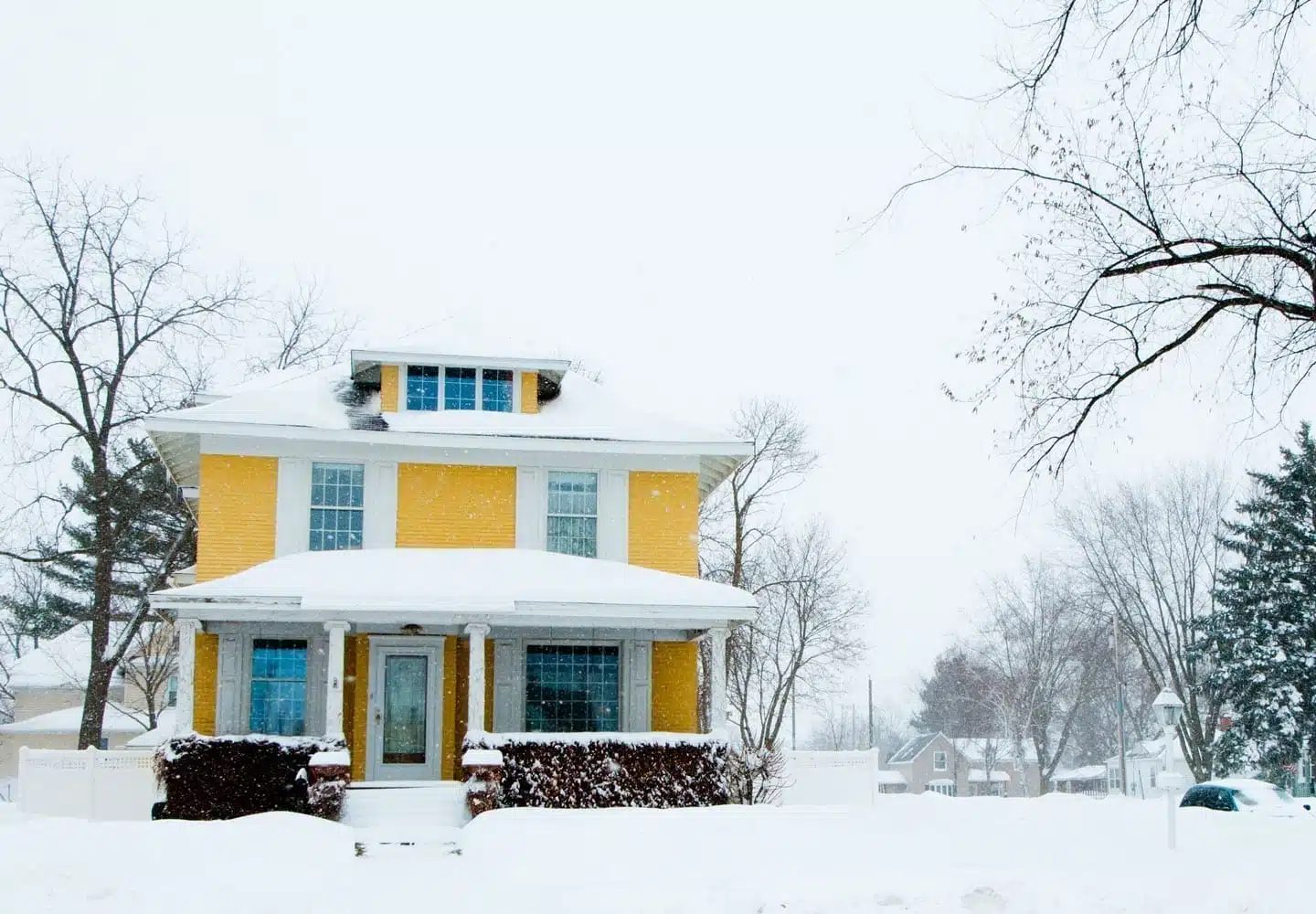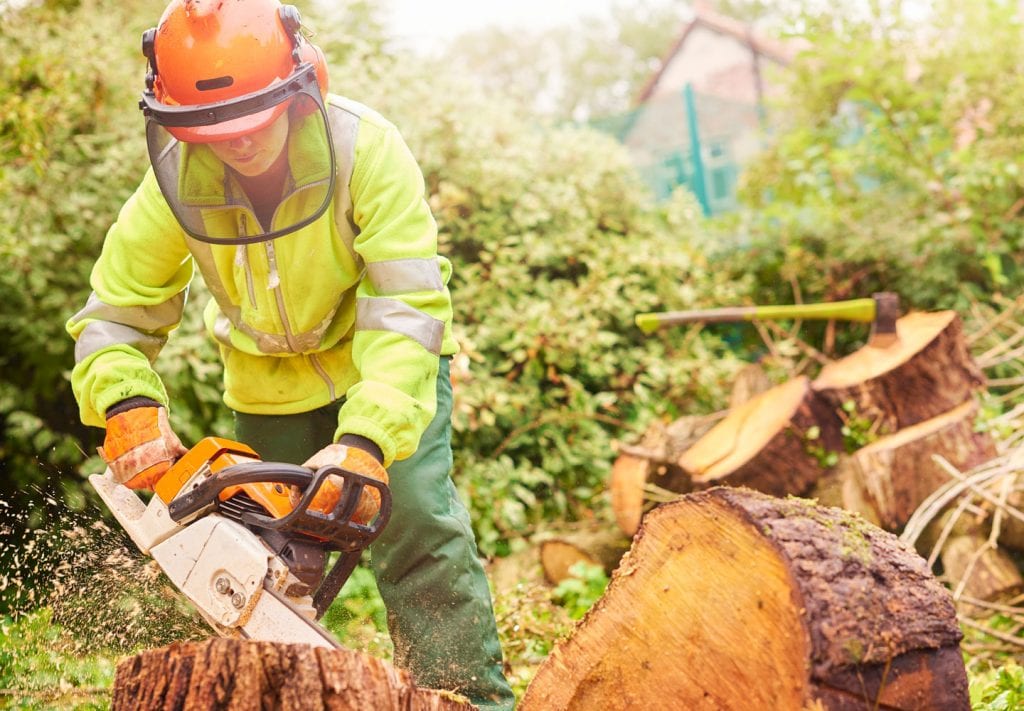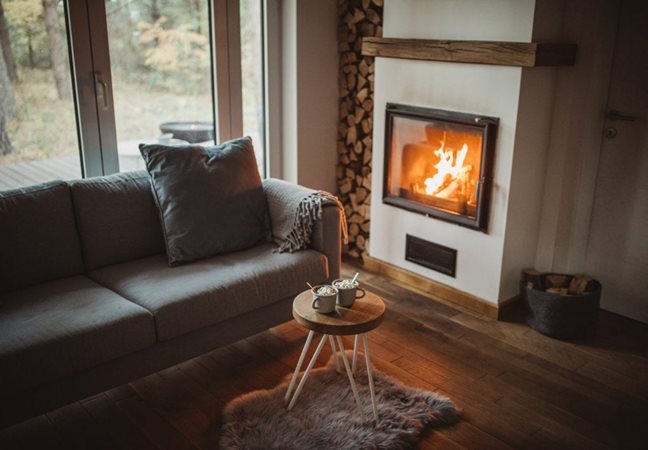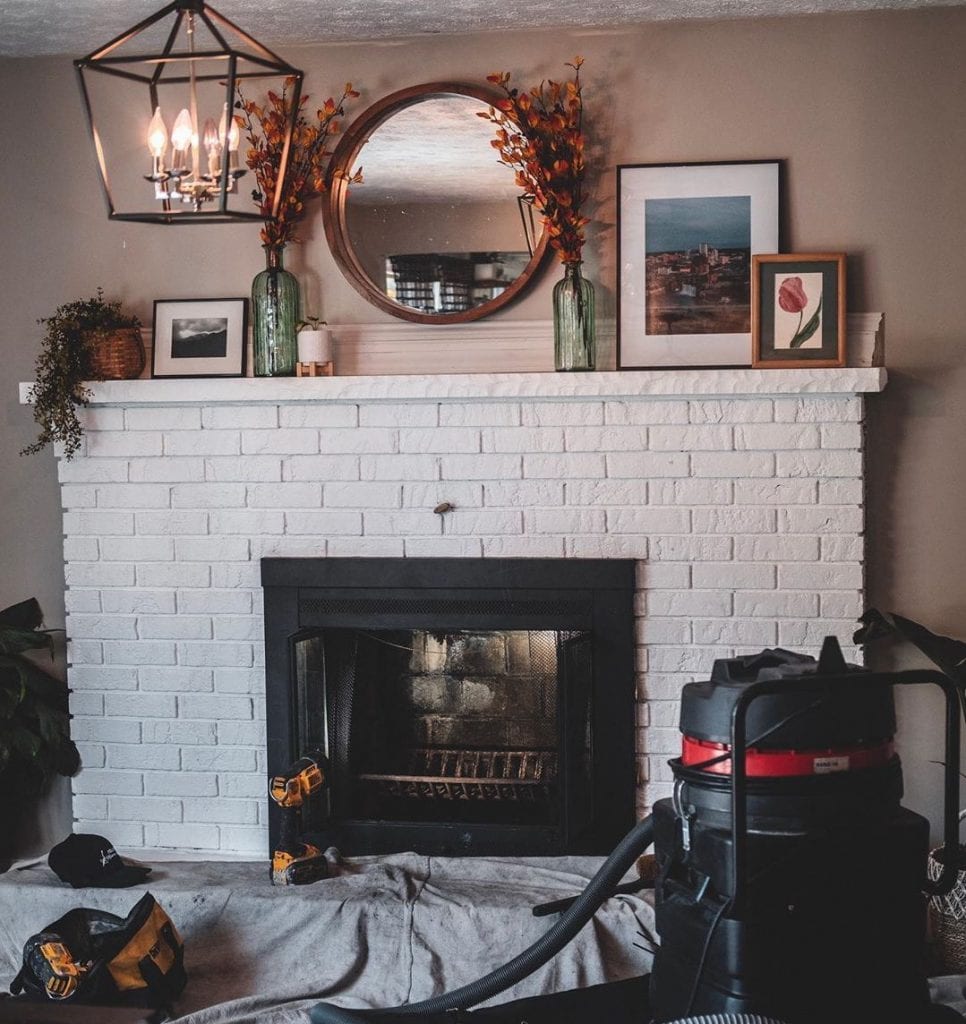
Your 2024 Winter Home Maintenance Checklist
Home Organization Tips
As the days grow shorter and you spend more time indoors, it’s more important than ever to make sure your home is hardened against harsh winter conditions. During the coming months, freezing temperatures outside and dry heated air inside can create a variety of issues — from frozen pipes that burst to leaky roofs. Whether you recently moved to a colder climate or an early arrival of winter storms has created a greater sense of urgency, you can help prevent future damage to your home and increase safety for your family with our winter home maintenance checklist.
1. Get Your Sprinkler System Blown Out
Gone are the days of having to continuously water the lawn (cause for celebration, right?). But that doesn’t mean you can just turn the sprinkler system off and ignore it for several months. Instead, avoid a costly repair situation (caused by water freezing inside the pipes and components and creating cracks or other damage) by having your irrigation system “blown out.” As the name suggests, you simply want to make sure all of the water is out of the lines, so your system can stay dry through the winter months. This can be done by a professional or, if you have access to an air compressor, you can do it yourself.
2. Prevent Pipes from Freezing
Speaking of water, exposure to cold air can make your pipes burst, which can cause significant water damage in your home. Luckily, there are a few easy ways to ensure this doesn’t happen. First, if you’re going to be out of town, keep your thermostat set at 65 degrees and open any cabinetry with plumbing so it can still get warm air flow. Second, you can also try adding some insulation to your pipes and faucets with a quick trip to the hardware store.
| If Disaster Strikes: Winter storms can come suddenly and fiercely with temperatures well below zero, depending on where you live. Power outages can eliminate the ability to heat your home and pipes may still burst despite our best efforts. When disaster strikes, act fast and secure a PODS portable storage container to store furniture and other things safely out of water-damaged sections of your home. Keep the container right there in your driveway for as long as you need until you’re ready to move things back into place. |
3. Clean Out Your Gutters
If you have any trees close to your home, your gutters may be full of leaves and debris. Even trees that don’t lose their leaves each year tend to have lots of debris fall during a windstorm. A small rake is the easiest way to comb the leaves out of your gutter. Hire a professional to clean your gutters, though, if you’re uncomfortable climbing up on a ladder to reach everything. Clearing everything away is important — if it rains heavily and your gutters are too full, the water won’t be directed properly, which may cause flooding around your exterior and damage to your siding and foundation.

4. Maintain the Trees on Your Property
And speaking of trees, winter weather can put a lot of stress on them — and on your plants. Walk around your yard or property and look for potential trouble spots, such as rotted branches or trees that are leaning to one side. Consider having an arborist come out to trim back large trees near your home or power lines, or to remove a tree or large branches that may be dead by the time winter is over. Otherwise, you risk a tree or branches falling over during a storm and potentially damaging your home or causing injury.
5. Check Your Smoke and Carbon Monoxide Detectors
In the winter, our doors and windows stay closed tight to keep out the cold air, which means fresh air flow is at a minimum. This means your home is more susceptible to build up of dangerous gases like carbon monoxide. Heating systems also tend to dry out the air in your home, so if something catches on fire, it can escalate much faster. Ensure you’ll be alerted to any smoke or gas leaks by checking on your carbon monoxide and smoke detectors. Most units have a button where you can run a test alert. Now’s also a great time to replace those batteries!

6. Get That Outside Furniture Inside
As winter approaches, it's wise to bring your outdoor furniture inside. Those wick, wood, and cloth pieces may look great in the summer, but they’re simply not built for the cold. This simple act can significantly extend their lifespan, protecting it from harsh elements like snow, ice, and freezing temperatures that can weaken and damage even the sturdiest materials. Wood can warp or rot, metal may rust, and plastic could crack under the weight of snow or in extreme cold.
Moreover, safeguarding your outdoor furnishings from winter's wrath maintains their aesthetic appeal and saves you money in the long run, as you won't need to repair or replace them as frequently. So, for the sake of durability and cost-efficiency, consider winterizing your outdoor living space by moving furniture to a secure, dry place.
| Is space in your home a challenge? That’s where PODS portable storage containers come in. Rent a container and keep it on your property, or squirrel it away in a local PODS storage center. Get a quote at PODS.com. |
7. Reverse the Ceiling Fans
This is an easy one that doesn’t cost a penny! You can give your heating system a helping hand by reversing the motor on any ceiling fans to make them run in clockwise direction. This will force warm air that rises near the ceiling down to the living area. And guess what? This simple step may be enough to allow you to adjust your thermostat to a lower temperature, so you can save energy and heating costs.

8. Check Your Heating System
Home maintenance experts advise getting your furnace checked annually by a professional, especially before the first big snowstorm arrives! Most manufacturers and technicians also recommend scheduling a tune-up or inspection for your furnace every year. During the appointment, a professional will not only check for any safety issues, but they can also perform maintenance as a preventive measure, so you don’t end up with a breakdown in the middle of a cold front — when you may have to wait several days for a service call. Here’s a quick rundown of the types of areas that need to be evaluated, depending on the type of heating system you have:
Gas furnace
A professional will check your vent system for any leaks or blockages. All burners should be checked for proper ignition, plus any hoses or drainage systems should be checked for leakage. This is also a good time to replace your filter, which should be done every one to three months or so.
Boiler
You should be doing at least monthly checks on your boiler for any signs of leakage. For an annual inspection, a professional will take a look at the heat exchanger, wiring, and venting system and ensure the water pH levels are in the correct range.
Heat pump
Make sure your outdoor unit is free from any leaves or snow, and trim back all shrubs and greenery at least 18 inches away. Technicians also recommend an annual inspection for heat pumps to ensure optimal functioning.

9. Schedule a Chimney Cleaning
The last thing you want on a cold wintry night is your home filling up with smoke because of a chimney blockage. Whether there’s a build up of soot or an old bird’s nest hiding at the top of your chimney, regular cleaning is essential for a properly functioning fireplace. Plan ahead and schedule an inspection and cleaning. That way, you can fully relax with that cup of hot cocoa next to your fireplace or wood stove.
10. Get Your Gas Fireplace Inspected
If you have a gas fireplace without a chimney, it’s still wise to get an annual inspection completed. Gas fireplaces can develop issues, such as creosote and debris build ups that could cause house fires. Not to mention a gas leak could put your family’s health at risk. A yearly inspection is quick, painless, and definitely worth the peace of mind.

11. Find Out if Any Heat Is Escaping Your House
After you’ve spent the money to have your furnace checked, you’ll want to make sure all that money isn’t going to waste every time you turn up the thermostat. The heated air in your home could be escaping through faulty weather-stripping around windows, cracks under doors, or poor insulation around pipes. While proper insulation in your walls is still key (around 31 percent of all heat in your home is lost through the walls and ceiling), there are lots of small things you can do to boost your home’s energy efficiency. Here’s a quick list of places to check for air leakage:
Recessed lights, wiring, and plumbing
Consider adding specialty spray foam insulation to seal gaps behind the wall near outlets and plumbing fixtures.
Windows and doors
Seal any cracks around your window frames with indoor caulk and add weather-stripping around door frames to create a seal against the cold air.
Basement
If you have a basement, there are often lots of holes to fit vents and pipes from indoors to out, which can allow heat to escape. Fill in the gaps with an expanding foam.
The Energy Department estimates that with proper weatherization and insulation, you can reduce your home’s heating and cooling use by as much as 30 percent. See this guide from The Washington Post for more specifics on how you can increase your home’s energy efficiency.
12. Stock Up on Emergency Supplies
If you live in an area that’s prone to winter storms, it’s important to prepare for short-term emergencies. Between 2011 and 2021, the number of major power outages in the U.S. increased 64 percent compared to the previous decade, due in part to more frequent extreme storms and weather conditions. Make sure you’re prepared with plenty of water, blankets, and canned and non-perishable foods. If you have a wood-burning fireplace, it’s good to have plenty of extra chopped wood and fire-starters on hand, so you can stay nice and warm if the power goes out.
13. Clear Snow and Ice from Your Roof and Trees
When the snow does arrive, it’s important to clear it from your trees. Wet snow can build up on tree branches and cause them to snap and break off — another safety hazard. And when it comes to your roof and gutters, snow and ice can also cause damage there. Use a telescoping roof rake to brush snow off your roof. To prevent dangerous icicles from forming along your gutters, make sure they’re clear of dirt and debris. For large icicle removal, consider hiring a roof expert. They’ll go on the roof to remove icicles from above, since it can be risky to knock them down from below.
Preparing your home for the cold weather ahead will help you enjoy the season to its fullest. As you go through your winter home maintenance checklist, you can rest assured knowing your home is ready for any freezing temperatures or snowstorms around the corner.
Want to learn more about taking care of your home? Check out home improvement tips from the pros on the PODS Blog!
Leslie Baker is a freelance writer and editor based in Denver, Colorado. Her passion is perfecting the art of truly making a house a home.
Related Articles
Comments
Leave a Comment
Your email address will not be published. Required fields are marked *
